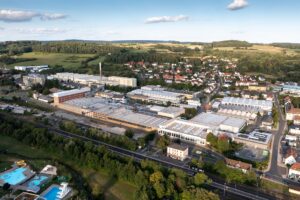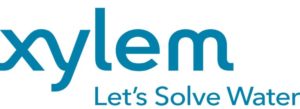Gardner Denver Reports Results
Gardner Denver announced that revenues and net income for the three months ended June 30, 2006 were $416.3 million and $33.0 million, respectively. For the six-month period of 2006, revenues and net income were $815.6 million and $63.5 million, respectively.
Diluted earnings per share (DEPS) for the three months ended June 30, 2006 was $0.62, 107% higher than the comparable period of 2005. For the six-month period of 2006, DEPS was $1.19, 113% better than the comparable period of the previous year. The improvement in financial results reflects incremental profitability attributable to organic revenue growth, pricing, acquisitions and cost reductions, including acquisition integration activities. Current and prior year DEPS and all share amounts presented in this press release reflect the effect of the two-for-one stock split (in the form of a stock dividend) that was completed on June 1, 2006.
Second Quarter Results
Revenues increased $166.0 million (66%) to $416.3 million for the three months ended June 30, 2006, compared to the same period of 2005. Compressor and Vacuum Products segment revenues increased 65% for the three-month period of 2006, compared to the previous year, primarily due to the incremental effect of acquisitions, stronger demand, manufacturing and supply chain improvements that resulted in increased production output, and price increases. Fluid Transfer Products segment revenues increased 71% for the three months ended June 30, 2006, compared to the same period of 2005, primarily due to stronger demand for drilling and well servicing pumps, manufacturing and supply chain improvements, incremental shipments as a result of increased outsourcing and price increases. (See Selected Financial Data Schedule.)
Orders for the three-month period ended June 30, 2006 were $181.0 million (66%) higher than the same period of the previous year, due to acquisitions and organic growth. The year-over-year organic growth in orders for compressor and vacuum products was 12%, which was supplemented by incremental orders from acquisitions. The 55% organic order growth for fluid transfer products for the three-month period of 2006 was driven by demand for oil and natural gas-related products that are expected to ship during the first half of 2007. Acquisitions also favorably impacted orders for fluid transfer products. Despite the increased revenue levels in the second quarter of 2006, orders in each reportable segment exceeded revenues, resulting in a 10% increase in total backlog from March 31, 2006.
Cost of sales (excluding depreciation and amortization) as a percentage of revenues decreased to 64.8% in the three-month period ended June 30, 2006, from 67.1% in the same period of 2005. This improvement was attributable to cost reduction initiatives and leveraging fixed and semi-fixed costs over additional production volume. Favorable sales mix also contributed to lower cost of sales (excluding depreciation and amortization) as a percentage of revenues. The second quarter of 2006 included a higher percentage of drilling pump and replacement pump parts shipments than the previous year and these products have cost of sales (excluding depreciation and amortization) percentages below the Company's average. Declines in productivity related to acquisition integration efforts partially offset some of these improvements.
Depreciation and amortization increased $7.3 million (102%) to $14.5 million, primarily due to the incremental effect of acquisitions. In the three months ended June 30, 2006, the Company substantially completed the allocation of the Thomas Industries purchase price to the assets acquired. The finalization of the fair market value of this business's tangible and amortizable intangible assets resulted in a $1.7 million increase in depreciation and amortization expense in the three-month period of 2006 that is not expected to recur.
As a percentage of revenues, selling and administrative expenses decreased to 17.5% for the three-month period ended June 30, 2006, compared to 20.7% for the same period of 2005. Selling and administrative expenses increased $21.3 million in the three-month period ended June 30, 2006 to $73.0 million, primarily due to the incremental effect of acquisitions ($20.7 million) and stock-based compensation expense ($0.8 million). These increases were partially offset by cost reductions, net of inflationary factors such as salary increases.
As a result of the improved cost of sales (excluding depreciation and amortization) percentage and leveraging selling and administrative expenses over higher revenues, operating earnings(1) (for a reconciliation of segment operating earnings to consolidated income before income taxes, see "Business Segment Results.") as a percentage of revenues (operating margin) for each reportable segment improved for the three-month period ended June 30, 2006, compared to the same period of 2005. Compressor and Vacuum Products segment operating margin was 10.4% in the three months ended June 30, 2006, compared to 8.1% in the same period of 2005. Fluid Transfer Products segment operating margin increased to 27.8% for the three months ended June 30, 2006, a new record level for this reportable segment, compared to 14.2% in the same period of 2005. The primary causes for the sequential decline in operating margin for the Compressor and Vacuum Products segment from the first quarter of 2006 (11.2%) to the second quarter of 2006 (10.4%) were the productivity decreases, integration-related severance expenses ($0.5 million) and the adjustment to depreciation and amortization that were discussed previously.
Incremental borrowings necessary to complete acquisitions and higher short-term interest rates resulted in increased interest expense for the three months ended June 30, 2006, compared to the same period of 2005. Other income, net, in the three-month period of 2005 included approximately $0.7 million of interest income earned on the investment of financing proceeds, prior to their use to complete the Thomas acquisition, and proceeds from litigation-related settlements ($1.6 million).
Net income for the three months ended June 30, 2006 increased $18.3 million (125%) to $33.0 million, compared to $14.7 million in same period of 2005, despite the inclusion of stock-based compensation expense and the higher effective tax rate in 2006 (33.9%) than in 2005 (30.0%). The results for 2006 include approximately $1.5 million of net income from acquisitions. Diluted earnings per share for the three-month period of 2006 was $0.62, 107% higher than comparable period of the previous year as a result of the increased net income. The improvement in DEPS is after the dilutive effect of the issuance of 11.3 million shares in May 2005 (adjusted for the stock dividend completed in June 2006).
Six Month Results
Revenues for the first half of 2006 increased $326.4 million (67%) to $815.6 million, compared to the same period of 2005, due to acquisitions, organic growth and pricing. Unfavorable changes in currency exchange rates partially offset this improvement. (See Selected Financial Data Schedule.)
Net income for the six months ended June 30, 2006 increased $38.5 million (154%) to $63.5 million ($1.19 DEPS), compared to $25.0 million ($0.56 DEPS) in same period of 2005. This increase was primarily attributable to organic revenue growth and price increases, cost reductions (including those associated with integrating previously acquired businesses) and acquisitions (net of interest expense related to financing the purchase price). DEPS for the six months ended June 30, 2006 was reduced $0.05 due to the recognition of stock-based compensation expense in accordance with SFAS 123(R). Compared to the previous year, DEPS for 2006 was also reduced as a result of having a greater number of average shares outstanding and a higher effective tax rate.
Cash provided by operating activities was approximately $23.3 million in the six-month period of 2006, 24% more than $18.8 million generated in the same period of 2005. Incremental production volume and revenues have resulted in increased investments in inventories and receivables since December 31, 2005. However, inventory turnover and days sales outstanding in the second quarter of 2006 are comparable to the levels of the fourth quarter of 2005.
The Company invested approximately $16.1 million in capital expenditures in the six-month period of 2006, compared to $10.5 million in the same period of 2005. The higher spending in 2006 reflects incremental investments in acquisition integration, cost reductions and capital spending at Thomas Industries' operations. Capital spending is currently expected to be approximately $45 million to $50 million in 2006, and will be used primarily to integrate businesses, introduce new products and improve operations. In addition to capital expenditures, cash provided by operations was used for acquisition payments and to repay debt. At the end of June 2006, debt to total capital was 42.0%, compared to 46.4% on December 31, 2005.
Source: Gardner Denver, Inc.





